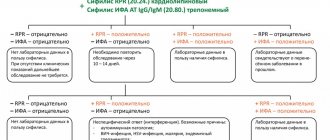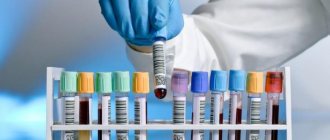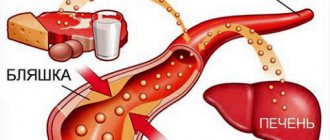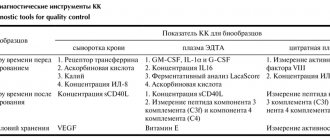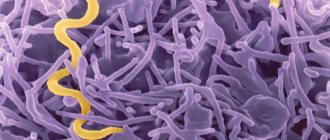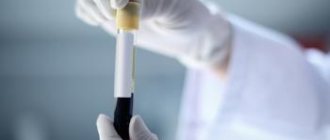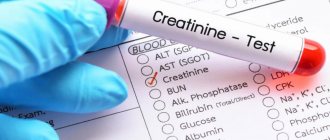Blood cancer, leukemia, leukemia or leukemia - these names define a type of malignant tumor that affects the bone marrow and is characterized by a high rate of metastasis. The disease is most often diagnosed in older people and children. A tumor occurs in the bone marrow as a result of the replacement of normal hematopoietic cells with malignant ones. This leads to disruption of the normal functioning of the hematopoietic system. The body stops producing platelets, leukocytes and red blood cells in the quantities necessary for life, producing white blood cells instead.
In the acute form of the disease, which occurs in children in 95% of cases, cells called blasts mutate. In the chronic form of leukemia, they degenerate into malignant mature blood cells. With the appearance of metastases, lymph nodes, kidneys, lungs, spleen, liver, etc. are affected.
Healthy organ tissue is gradually displaced, which leads to the following complications:
- the likelihood of developing infections increases;
- anemia appears;
- the risk of hemorrhage increases.
Classification
According to the nature of the flow, the following are distinguished:
- acute form of blood cancer with characteristic transience, headaches and convulsions, vomiting, bruising on the skin, weakness and decreased vitality;
- a chronic form with a slow course, weakness, bleeding gums, weight loss, increased body temperature, and frequent infectious diseases.
Chronic and acute forms of leukemia do not flow into one another.
According to the features of the clinical picture, the following are distinguished:
Lymphocytic leukemia, occurring in most cases in children 2-8 years old (boys - 80% of cases). The main reasons: genetic predisposition, infection of the mother during pregnancy. Symptoms of lymphocytic leukemia:
- enlarged lymph nodes, pale skin, breathing problems;
- sudden weight loss, fatigue, weakness;
- hardening or change in the size of the testicles;
- the appearance of ulcers when the skin is injured.
Acute myeloid leukemia most often develops after age 50. The cause is DNA defects in immature bone marrow cells. The symptoms of the disease are:
- dizzy, feeling weak and unwell;
- no appetite;
- pain appears in the joints and bones;
- Infectious diseases are becoming more frequent;
- increased bleeding is observed.
Acute monoblastic leukemia is diagnosed quite rarely. It can occur in a chronic or acute form. Main symptoms:
- enlarged lymph nodes;
- the appearance of scattered hemorrhages on the body;
- enlargement and hyperemia of the testicles in men;
- pale skin;
- abdominal pain and a feeling of heaviness in the liver area;
- stomatitis;
- arthralgia.
Multiple myeloma most often affects people over 43 years of age. The disease manifests itself as anemia, frequent bacterial infections, arthralgia, fractures, and bleeding.
Chronic myelocytic cancer in adults is diagnosed mainly in men 27-50 years old. The course is long-lasting and asymptomatic. Main symptoms:
- feeling of aching bones;
- weight loss, nausea and vomiting, discomfort and pain in the abdominal cavity;
- body temperature rises, shortness of breath is observed;
- Lymph nodes enlarge, dizziness and headaches are observed.
Lymphocytic cancer is practically asymptomatic. The main manifestations are:
- frequent infections;
- discomfort in the liver area;
- enlarged lymph nodes;
- sweating and weakness.
Monocyte chronic blood oncopathology is diagnosed more often in patients over 57 years of age. The course is practically asymptomatic.
Algorithm for taking blood for analysis
Test results may vary depending on the physiological state of the patient, his lifestyle and diet. To ensure that the indicators are as accurate as possible, it is important to prepare properly before taking material for research. The set of measures recommended by doctors includes several points:
- the procedure is carried out in the morning, and at least 8 hours must pass after the last meal (for general analysis, a break of 6 hours is allowed), drinking water is allowed;
- be sure to notify your doctor about systematically taking any medications, and if possible, stop taking them for 2 weeks or more;
- one hour before the analysis, you should avoid physical activity and also do not smoke;
- Refrain from eating fatty foods and alcoholic drinks for several days.
Leukemia may not manifest itself clinically, especially in the early stages. The patient is concerned about weakness, fatigue, headaches and dizziness. In some cases, the disease is discovered during routine examinations.
Causes
The main reasons due to which this oncopathology may occur are:
- genetic predisposition;
- severe viral diseases that led to weakening of the body;
- ionizing radiation;
- medications, long-term use of antibiotics, chemicals (polymer materials, paints, varnishes, household chemicals);
- frequent stress.
But modern diagnostics show that oncology may have nothing to do with risk factors. There are cases when diagnostics revealed pathology in a person who had no apparent reason for the development of the disease.
Symptoms and signs of leukemia
A feature of blood cancer is the similarity of symptoms, especially in the early stages, with other diseases. Among them:
- fatigue, weakness, decreased vitality and immunity;
- the appearance of bruises on the body with minor mechanical impact;
- frequent rashes of unknown etiology, poor wound healing;
- enlargement of the liver, spleen and other organs;
- pain in bones and joints;
- memory impairment, insomnia or drowsiness;
- decreased hemoglobin level, anemia.
Provided timely treatment, the doctor can prescribe effective therapy and cure the disease.
The following signs indicate the transition of the disease to a severe stage:
- weight is significantly reduced;
- mucous membranes often bleed;
- the skin turns yellow or becomes very pale;
- wounds heal poorly or fester;
- There is bloating and pain in the hypochondrium.
The formation of dense subcutaneous nodes (lymphatic tissue tumors) in the areas of natural folds helps determine blood cancer in children.
What is blood cancer and how to recognize it?
The chief hematologist of Yekaterinburg, head of the hematology department of Central City Hospital No. 7, Vyacheslav Semenov, spoke about how to recognize blood cancer at an early stage and methods of treating it.
Vyacheslav Andreevich, what are the symptoms of leukemia? Maybe malaise or something else?
Acute leukemia is a malignant tumor disease of blood cells. It arises in the bone marrow from immature precursors of leukocytes - blasts. Normally, the number of blasts in the bone marrow does not exceed 5%, but they should not enter the blood. With the development of acute leukemia, normal blasts turn into tumor blasts and begin to actively multiply, their percentage increases significantly (more than 20%), they begin to enter the blood. Thus, acute leukemia can be suspected only by passing a general blood test, where leukocytes, platelets, erythrocytes, hemoglobin will be counted and blasts can be detected. The most common first symptoms of acute leukemia may be pallor, severe weakness, loss of weight or appetite, colds, high fever, susceptibility to infections, sore throat, stomatitis (mouth ulcers), gingivitis (inflammation of the gums), swollen lymph nodes, and increased bleeding, bruising or pinpoint rashes on the skin. In all these conditions, you must immediately take a general blood test. Changes in blood tests in acute leukemia are usually very pronounced - leukocytes can be either very high or very low, hemoglobin and platelets are always sharply reduced. The diagnosis of acute leukemia is made only by a hematologist; to confirm this diagnosis, a bone marrow examination is also performed.
What forms of treatment are there? Is it immediate chemotherapy or maybe outpatient treatment?
Currently, treatment of acute leukemia always begins with chemotherapy - these are infusions (droppers) or chemotherapy tablets. Chemotherapy drugs are quite toxic, but this is the only way they can destroy tumor cells. And, nevertheless, even they cannot always completely cure a patient of acute leukemia. Some types of acute leukemia require further bone marrow transplantation (transplantation), however, the transplantation can only be effective if remission occurs (disappearance of tumor blasts during chemotherapy). New drugs are also being created that can affect tumor cells to a greater extent and healthy cells to a lesser extent. Treatment of acute leukemia can only be in a specialized hospital, by specialists with experience in chemotherapy. After recovery occurs, it is possible to continue maintenance therapy aimed at preventing the return of the disease (relapse) on an outpatient basis.
What tests need to be taken to detect leukemia at an early stage?
The main and simplest test for detecting acute leukemia is a complete blood count. It must be taken if there is any deterioration in health, especially if there are signs of infection (fever, sore throat) or bleeding. I recommend that healthy people take a general blood test every six months.
- July 30, 2021 at 03:38 pm
- 99 704
When to see a doctor
You should seek help from an oncohematologist if your health condition worsens if the following symptoms and signs are present:
- a sharp deterioration in health;
- unreasonable increase in body temperature;
- the appearance of rashes and bruises on the body;
- poor wound healing;
- pain in bones and joints;
- symptoms of anemia;
- hemoglobin levels and immunity are reduced.
Signs of deteriorating health in any case are a reason to contact the oncology center so that the doctor can prescribe additional tests and adjust the treatment.
Results for various types of leukemia
There are several types of leukemia. Thus, blood counts in the chronic form will differ from the clinical picture of acute leukemia. These changes depend on the degree of bone marrow damage and the general condition of the patient. Typical analysis results may include the following changes:
- increased erythrocyte sedimentation rate;
- an increase (leukocytosis) or a decrease (leukopenia) in the concentration of red blood cells;
- anisocytosis - the appearance of abnormal forms of leukocytes;
- decreased levels of red blood cells and platelets;
- a significant decrease in the number of reticulocytes - the precursors of red blood cells;
- decrease or complete absence of various forms of leukocytes, including eosinophils and basophils.
A clinical blood test is only one of the methods for diagnosing leukemia. If this disease is suspected, additional tests may be needed, including a bone marrow puncture.
Acute leukemia
Acute forms of leukemia are characterized by significant disruption of hematopoietic processes. One of the typical signs is a decrease in hemoglobin concentration (up to 30-60 g/l), as well as a decrease in the number of red blood cells, which together leads to anemia. This symptom may not appear in the initial stages, and is also slightly expressed in lymphocytic leukemia. It is also possible to diagnose a significant decrease in the number of platelets - in some patients it does not reach 20*109.
IMPORTANT! In the acute form, a leukemic failure is observed - a condition in which there are no transitional forms of cellular elements in the blood, and its composition is represented by immature (blast) forms.
The number of leukocytes can be either reduced or increased. Leukopenia (a decrease in the number of these cells) accounts for approximately half of all cases of the disease and is often characteristic of myeloid leukemia. For different types of disease, this indicator can vary from 0.1-0.3*109 to 100-300*109. A large number of immature (blast) forms of leukocytes are found in capillary blood. In some patients, normal cell production is partially preserved, but this is gradually lost as the disease progresses.
Chronic myeloid leukemia
This variety is rarely detected in the initial stages. At first, the number of leukocytes increases slightly (within 20-30*109), but over time this figure increases to 200-300*109. During this period, the patient complains of a sharp deterioration in health. The following symptoms also appear:
- increasing the percentage of basophils (up to 20%);
- an increase in the number of basophilic granulocytes;
- hemoglobin level and red blood cell content without significant deviations;
- in the acceleration phase - a rapid increase in the level of leukocytes, a decrease in the level of erythrocytes and hemoglobin, thrombocytosis;
- at the terminal stage - a decrease in the number of red blood cells, platelets, and leukocytes.
As the disease progresses, the clinical picture of the blood changes. Thus, in the terminal stage a blast crisis may occur. In this condition, the number of immature forms increases sharply and can reach 20%. The patient's health deteriorates sharply and emergency therapy is required.
Analysis results may vary depending on the form and stage of leukemia
Chronic lymphocytic leukemia
A characteristic sign of this type of disease is a progressive increase in the level of leukocytes. Lymphocytes predominate among them, and immature forms may appear. Gumprecht's bodies and Reader's forms are also found. The concentration of other formed elements (erythrocytes, platelets) decreases in parallel.
Hairy cell leukemia
This is a special form of the disease in which anemia is diagnosed at an early stage. A typical sign is the detection of abnormal types of white blood cells in the blood. They have a homogeneous young nucleus and cytoplasm without granularity. It contains villi, which are visible under a light microscope. To make a diagnosis, it is necessary to examine the material using phase-light microscopy.
Diagnosis of leukemia in the oncology center
Diagnosis of leukemia in the oncology center, located at 2nd Tverskoy-Yamskaya Lane, is carried out in several stages:
- initial examination by a doctor with medical history;
- general and biochemical blood test;
- taking tests using modern diagnostic techniques: MRI, ultrasound, PET/CT, radiography, scintigraphy, SPECT.
One of the most informative diagnostic methods is bone marrow puncture (immunohistochemistry of punctate, cytochemical and cytogenetic analyses).
Highly qualified oncology specialists use the latest diagnostic equipment, which guarantees high diagnostic accuracy and safety for patients.
Characteristics of the disease and pathological changes
Leukemia (leukemia) is also called blood cancer. This is a malignant disease that affects the hematopoietic organs. In a healthy person, blood cells are formed by red bone marrow and then undergo several stages of differentiation. They enter the bloodstream already in a mature form, and several varieties are distinguished:
- erythrocytes (red blood cells) - their role is to transport gases;
- platelets - responsible for blood clotting processes and regulate its viscosity;
- leukocytes (white cells) - perform a protective function and are divided into several fractions: lymphocytes, monocytes and granulocytes.
With leukemia, there is a malignant degeneration of bone marrow tissue, as a result of which it does not produce precursor cells in sufficient quantities. Also, an increased amount of abnormal forms of various elements appears in the bloodstream. For this reason, they cannot perform their functions, and the patient suffers from various manifestations of deficiency of normal healthy cells.
REFERENCE! Depending on the location of the affected area, several types of leukemia are distinguished. They can be determined, among other things, by blood counts.
Treatment of blood cancer at the oncology center
When developing tactics in the treatment of blood cancer, the type of pathology and individual characteristics of the patient are taken into account. Oncology doctors provide effective treatment using the following methods:
- chemotherapy, which is the process of introducing chemical drugs into the body that have a destructive effect on the tumor, using innovative syringe and infusion pumps;
- targeted drug therapy, during which only tumor cells are destroyed;
- radiation therapy (radiotherapy).
Clinical blood test
A general blood test for leukemia is one of the most accessible ways to diagnose pathology and determine its stage. For this, it is enough to take capillary blood (from a finger), but if a simultaneous biochemical analysis is planned, the material for the study is taken from a vein. Next, the liquid is studied under a microscope, while simultaneously counting the number of different types of formed elements, as well as their anomalous forms.
Peripheral blood is usually used for research; in some cases, material from a vein may be needed
Treating oncology under compulsory medical insurance – what is needed for this?
You can receive FREE medical care at the Oncology Center under the State Guarantee Program of Compulsory Medical Insurance (Compulsory Medical Insurance) and High-Tech Medical Care.
The service is valid for all Russian citizens.
To find out more details, as well as for what nosologies and services this program works, please call +7, or you can read in more detail here.
Treatment and diagnosis of oncology are expensive medical services. The examinations alone cost a lot of money, and this is only the beginning of an already difficult path. Therefore, many patients are forced to postpone cancer treatment, since financial losses can literally ruin them. In this regard, the Sofia Clinic offers a number of services under the health insurance policy. Free cancer treatment under compulsory medical insurance is available to all Russian citizens. First of all, patients with very serious diagnoses, for whom treatment is a matter of life and death, can count on it. Such cancer patients are provided with quotas, which are financed from the federal and local budgets. As part of treatment under compulsory medical insurance, the following procedures are performed:
- PET/CT;
- radiation therapy;
- chemotherapy;
- IHC;
- surgery.
The decision to provide free oncology treatment under compulsory medical insurance is made by three commissions - the clinic, the health department and the medical institution itself. You can shorten this path if you immediately contact us and ask what procedures our clinic issues quotas for. The doctor (therapist or oncologist) will prepare a statement with the diagnosis and information about what diagnostics you have already undergone. You will need to submit to the regional health authority:
- medical direction;
- application for treatment of cancer under the compulsory medical insurance policy;
- Russian passport and insurance policy;
- SNILS;
- consent to the processing of personal data;
- pension certificate (for pensioners).
Benefits of onco
The success of oncology treatment greatly depends on the level of the clinic. And it’s not just about the professionalism of doctors and specialists conducting diagnostics. All therapeutic procedures must be performed using modern and high-tech medical equipment. The same applies to devices on which diagnostics are carried out. The data obtained with their help must be as accurate as possible so that the doctor can determine the location of the lesion and the stage of oncological pathology. And don’t forget about patient comfort. Diagnosis and treatment of oncological diseases takes a lot of time. Patients often have to spend the whole day within the walls of a medical facility, and some patients are undergoing inpatient treatment. Therefore, it is important that the environment and atmosphere be as favorable as possible. Onko took into account both his own 30 years of experience and the experience of foreign medical institutions. This allows us to diagnose cancer tumors and treat cancer patients with maximum efficiency, safety and comfort. See for yourself:
- Each of our doctors is a highly qualified specialist with many years of experience both in Russia and in hospitals in the USA, Europe and Israel. We employ leaders of domestic medicine, as well as competent international consultants.
- Diagnostics and therapeutic procedures are carried out in beautiful and cozy rooms. We have decorated our departments in a stylish design so that the interior looks as little as possible like a hospital room. Also for patients and their accompanying people there is a café and a restaurant on the roof with panoramic views of the city.
- High safety and quality levels have been repeatedly confirmed by numerous certificates and awards. We carry out our activities in strict accordance with domestic and international standards, which allows us to minimize side effects and significantly increase the chances of recovery.
Make an appointment
Our oncology clinic is located in the very center of Moscow, close to several metro stations - Novoslobodskaya, Tverskaya, Chekhovskaya, Belorusskaya and Mayakovskaya. For visitors arriving by car, there is ample parking available on the medical grounds. Our employee will help you find your way around the clinic, take you to the right department and tell you where this or that office is located.
You can make an appointment with a specialist:
- by calling a phone number;
- online by filling out a special form on the website;
- ordering a call back.
